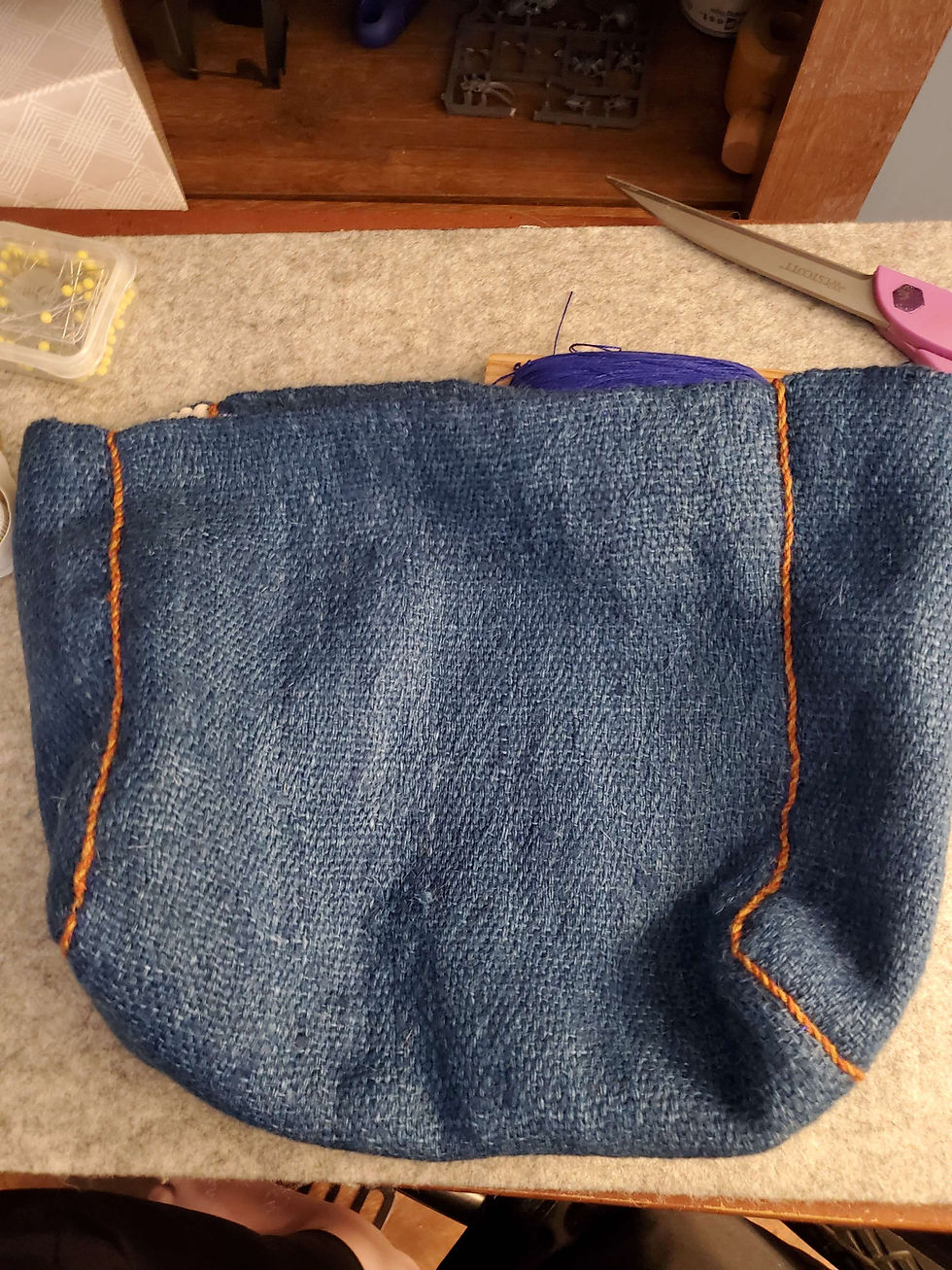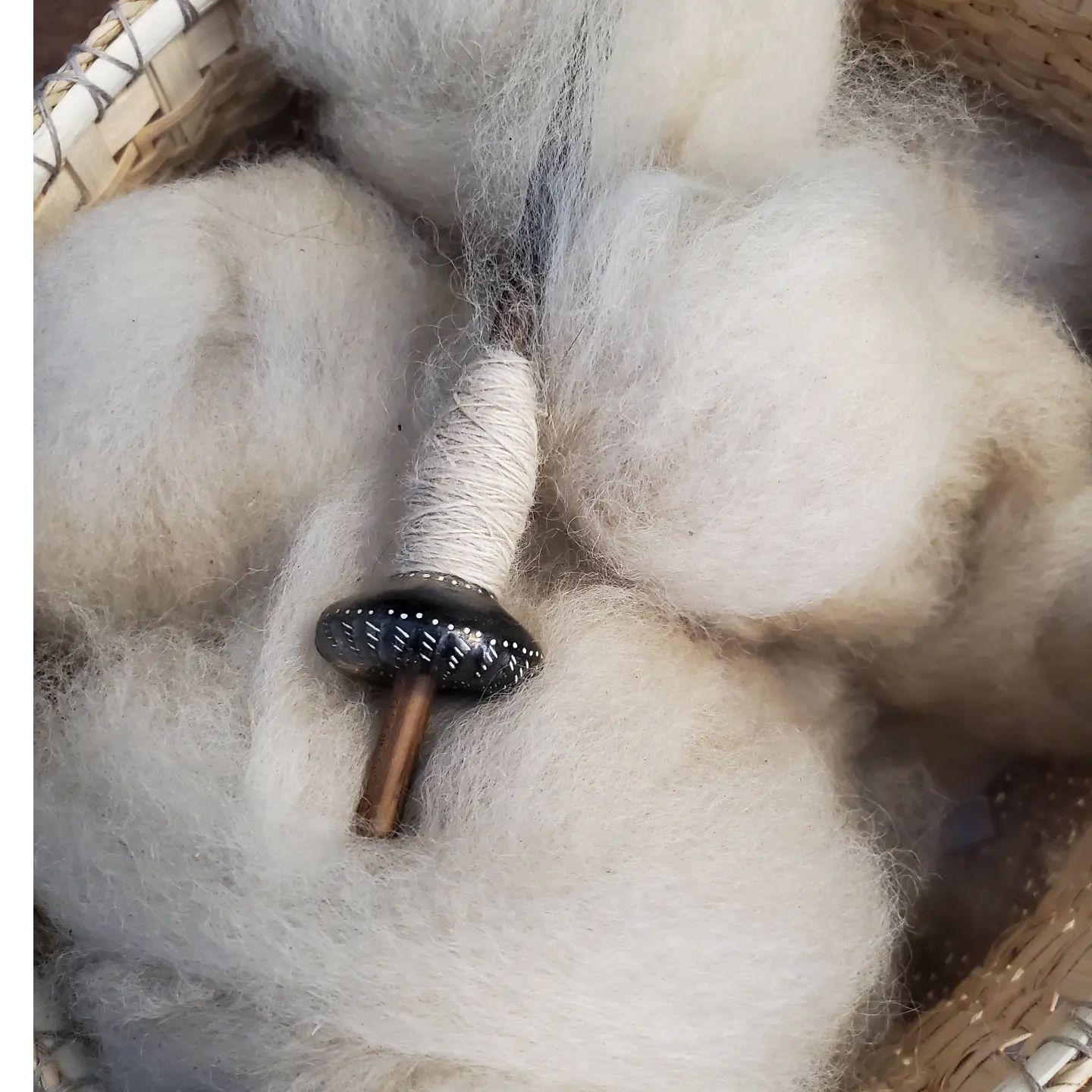A Birka Bag
- ecthumann
- Mar 18, 2023
- 2 min read
*Note: A longer, pdf document of this project with attached resources in available in the Research Section

This was a fun project for Ice Dragon's Pentathalon this year. It's the first time I've taken something from competely raw materials to a finished piece.
The fleece for the wool for the fabric for the bag was from a Värmland ram that I ordered through Etsy. Anita's Yarns has great Swedish breeds that aren't easy to find in the states and shipping was exceptionally reasonable, considering the amount of wool that I had her send me.

The wool was combed using Ashford Viking combs. I used a diz to get an even draft and then wound the wool into balls for the spinning basket.
The spindle is from Feed the Ravens. The yarn was spun with an S twist for warp and a z twist for weft, based on finds of tabby fabric from Birka. The yarns were then skeined on a niddy noddy and dyed with woad.

I went with a simple tabby weave because the yarn was super "sticky" and wanted to cling to itself which made it hard to open the shed.

The raw edges were turned under and stitched before a lining was applied to the all the pieces and then the bag was stitched together.

A simple twisted braid was sewn to cover the seams. I used gold and red wool threads as they were the closest approximation of weld and madder dyed yarn (my weld and madder yarns from this summer were a little too bright for this project).

I wove a tablet band for the top of both the front and the back. The pattern is based on a section of a brocaded band from Birka.

The handle is based on a find from the Birka harbor that closely resembled the handles of the Hedeby bags. Because the island that Birka was situated on, Björkö Island, means "birch island", I decided to use birch wood from the farm to make my handles.
Adam went out and found the right tree and did the rough axe shaping. There is a limit to my usefulness in the woods or with quickly moving bladed objects. The wheelchair, unfortunately, creates some limitations.

The pattern was traced onto paper and then the wood was trimmed down, cut to shape and then smoothed with a knife and sandpaper.

The handles were finished with some wood conditioning oil and then a wax and oil protective coating. They were stitched to the bag and the handle yarns were plied and braided.


Comments